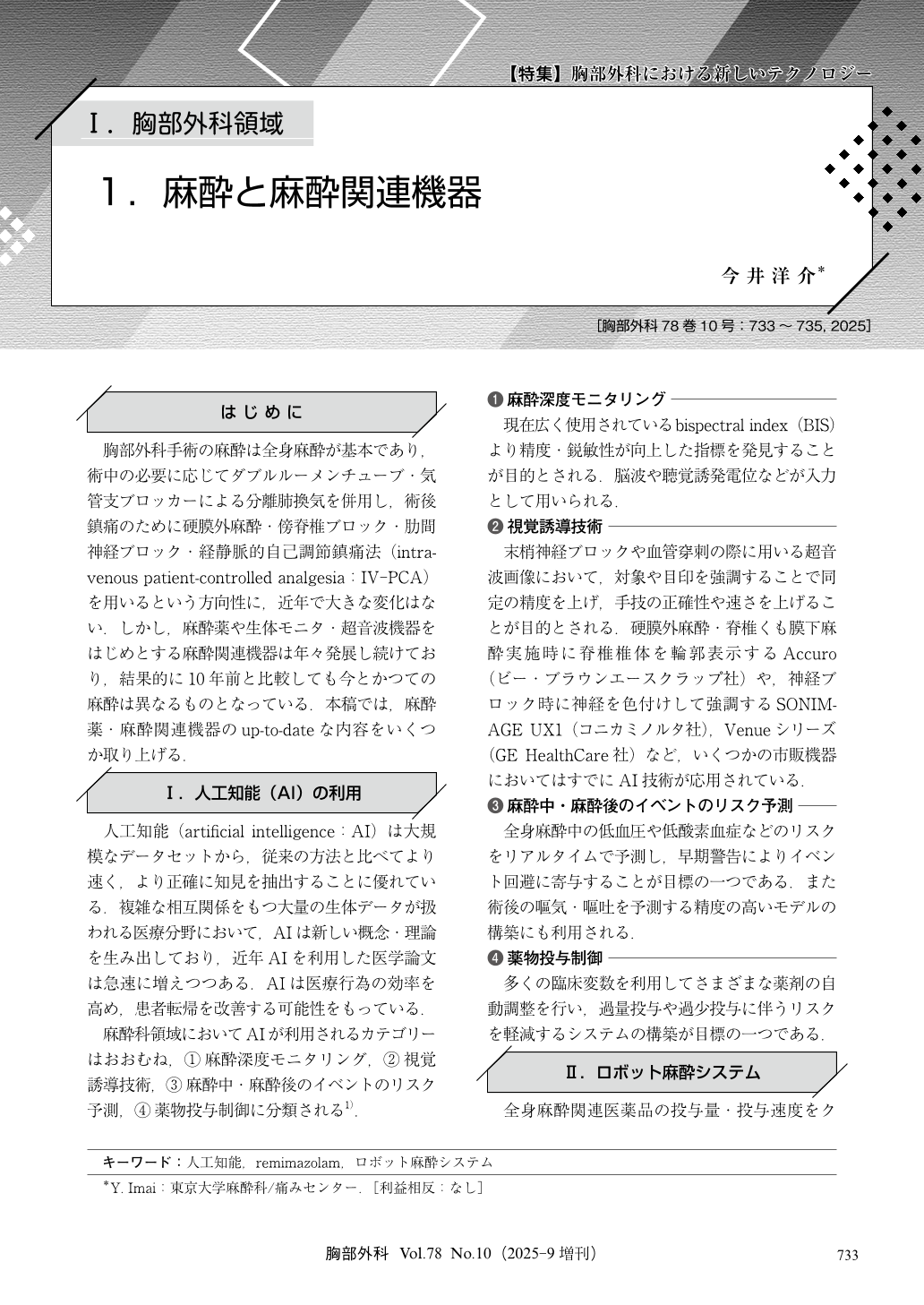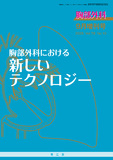Japanese
English
- 有料閲覧
- Abstract 文献概要
- 1ページ目 Look Inside
- 参考文献 Reference
胸部外科手術の麻酔は全身麻酔が基本であり,術中の必要に応じてダブルルーメンチューブ・気管支ブロッカーによる分離肺換気を併用し,術後鎮痛のために硬膜外麻酔・傍脊椎ブロック・肋間神経ブロック・経静脈的自己調節鎮痛法(intravenous patient-controlled analgesia:IV-PCA)を用いるという方向性に,近年で大きな変化はない.しかし,麻酔薬や生体モニタ・超音波機器をはじめとする麻酔関連機器は年々発展し続けており,結果的に10年前と比較しても今とかつての麻酔は異なるものとなっている.本稿では,麻酔薬・麻酔関連機器のup-to-dateな内容をいくつか取り上げる.
In thoracic surgery, general anesthesia remains the standard approach. During the procedure, one-lung ventilation using double-lumen tubes or bronchial blockers is employed as needed. For postoperative pain control, a multimodal approach is taken, incorporating options such as thoracic epidural anesthesia, paravertebral blocks, intercostal nerve blocks, and intravenous patient-controlled analgesia (IV-PCA). These practices have remained consistent in recent years. However, anesthetics and anesthesia-related devices including physiological monitors and ultrasound machines have continued to evolve. As a result, anesthesia today differs significantly from that of a decade ago. This section highlights the latest advances in anesthetics and anesthesia-related technologies, including:(1) the use of artificial intelligence (AI) for monitoring and decision support, (2) robotic anesthesia systems with automated drug delivery, (3) remimazolam as a novel ultra-short-acting sedative, and (4) autologous blood recovery systems capable of platelet collection, improving hemostasis and reducing transfusion requirements. Although the clinical efficacy of these innovations remains to be established through future research, there is considerable anticipation surrounding their potential to enhance the quality of anesthesia management.

© Nankodo Co., Ltd., 2025


